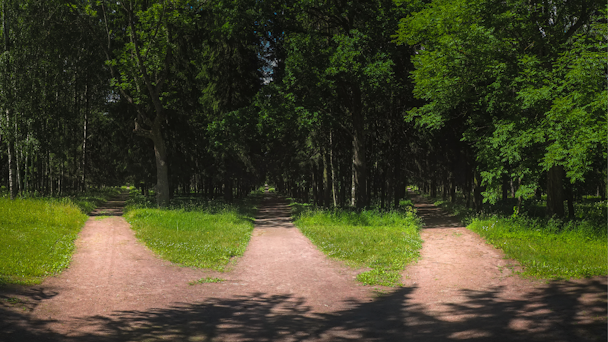3 pathways to accessing ‘locked-in’ B2B mindsets
We all have a tendency to follow the regular paths of our day, both figuratively and literally. Business-to-business (B2B) buyers are no different. They will exhibit a heads-down approach to getting through their tasks. It’s up to the marketer to make them take notice. Carbon Design chief Scott Gillum explains how.

Marketers need to get B2B buyers to look up from the trail of their work
I went for a bike ride on a trail that I’ve traveled many times but have avoided lately because of the ‘Covid crowds’.
Taking off in a southern direction on the 10-foot-wide path, my focus was on the bike computer between the handlebars. As typical, I was locked in on my speed and spin rate. Knowing the scenic path along the Neuse River well, I put my head down and focused on my performance.
That was until I ended up in a parking lot. Trying to piece together where I was and how I got there made me realize that I didn’t notice any of my typical landmarks, which then caused a bit of a panic.
Pulling my phone out to unravel the mystery, I discovered that the focus on my performance put me two miles past my usual turnaround spot. After figuring out the situation, I decided to keep my head up on the return.
As I pedaled back, I noticed that a scenic overlook, which served as an important landmark, had been expanded and recently landscaped. The biggest surprise, which was somewhat startling, was a 100-yard clearing of trees for the expansion of a housing development not more than 30 feet off the trail.
The scenario I just described is not unlike what happens with our audiences during their workday. They step on to the 10-foot path that is their job in the morning and travel it like a well-worn trail to their usual destination.
Their computers narrow their focus and attention even more, just like my bike computer. It’s a heads-down routine that often makes them oblivious to changes all around. This creates an opportunity for us to discover new insights that enable us to redefine our position and messaging that gets their attention.
A ‘locked-in’ mindset makes us vulnerable to bias and blind spots. The longer someone has been in the job or industry, the more likely they are to believe they know ‘the path’. The brain seeking to reserve ‘brain power’ moves routine tasks to a part of the brain that requires little cognitive energy. This is the reason I ended up in the parking lot on a trail I thought I knew well.
As a result, we can bring new insights to this audience. Typically, there are three fertile areas to explore:
-
The unknown. This is the typically the hardest to discover, but the most powerful.
-
The underappreciated. What has changed that makes something known more impactful or significant?
-
The undervalued. What are they missing that may be impacting their success, their mission or their customers?
Depending on our audience’s personalities, some of these areas are more impactful than others.
For example, on the way down the path I kept my head down and focused on my performance. This very much aligns with a personality type that is career driven. We can gain their attention through messaging that alerts them to something ‘unknown’ down the path.
If that audience segment only focuses on one or two things that they believe drive their business or performance, like my speed and spin rate, what can you tell them about the importance of understanding another factor?
What is on their ‘path’ that they may be missing, like a parking lot two miles from the usual turnaround spot? What ‘unknown’ is just over the horizon that may impact their success?
On the return journey, my behavior was like another key audience that is constantly scanning the horizon for new things to share with others. They will be looking for the changes to establish ‘landmarks’ to share, like me telling a neighbor who also bikes the trail about my discovery of the construction area.
This audience segment seeks and brings new information into the organization. They’re not as focused on the ‘path’ as much as they are on what is happening around it. As a result, that typically leads them to sharing information highlighting the undervalued or underappreciated.
In both cases, the new information I gained will change my behavior and will cause me to act, which is the goal of marketing. The new construction will disrupt my biking experience. In the future I will avoid that section of the ‘path’. I also now have a new appreciation for checking the distance traveled, and occasionally picking my head up to determine where I am along the trail.
Buyers ‘lock in’ every day at work, and a message right in front of them on the well-worn path will not disrupt. They’ll ride over like a bump on the trail. To capture their attention, search off their beaten path and over the horizon. It’s what they don’t see, or realize, that matters – because no one wants to end up in a parking lot.
Scott Gillum is founder and chief executive at Carbon Design.
